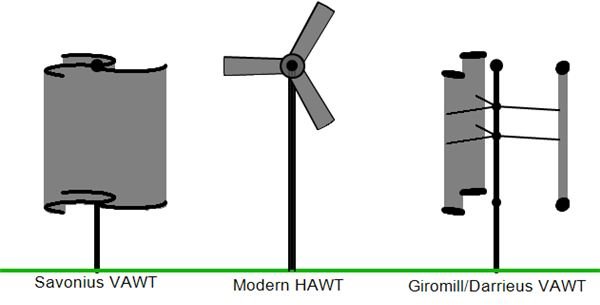Why Aren't Energy Producers Converting to Renewable Energy Sources?
Oil and coal, although common and popular sources now for electrical power generation, are finite resources that will one day no longer be available. Nuclear power can provide us with electrical power for much longer than fossil fuels, but the danger it entails makes many people nervous. Other than biofuels, which so far tend to use up as much energy to manufacture as they produce, that leaves wind power, solar power, and wave power as the best bets for energy sources that won’t run out in the foreseeable future. The bottom line is money, but there’s more to it.
We’ll take a look at the various forms of renewable energy that can be leveraged in each region of the country. Then we’ll explore why more energy providers aren’t investing in our future by investing in renewable technologies.
How Your Electrical Utility Makes a Profit
This sounds pretty obvious. You get a bill every month showing how much energy you used at what rates, and at the bottom the total is listed.
System upgrades and new energy production resources cost money, but energy producers aren’t like most businesses. Your favorite mechanic isn’t going to raise his rates immediately in order to pay for a new tool that allows him to perform more work. If the tool is expensive, he’s going to pay for that tool over a period of time, making monthly payments and taking a small profit from the use of that tool each month.
An energy producer, on the other hand, is going to petition the state utility commission, and maybe the federal government, asking to raise rates to cover the cost of construction, material acquisition, and implementation costs BEFORE they make the decision to perform the upgrade or acquire the new generating capacity.
Different Types of Renewable Energy Sources
By now almost everyone in the country has heard at least some of the discussions concerning renewable energy. Many people are familiar with solar power and may have seen windmills while driving around.
- People from Central California may remember seeing windmills along highway 580 in the Altamont Pass area since the early 80s.
- Southern Californians that have traveled east on Interstate 10 will remember the windmills in the hills between Banning and Palm Springs.
So solar and wind are the conventional utility-scale resources to consider.
Unconventional Sources of Alternate Energy
Wave Energy
The natural tidal motion of the oceans can be a source of power as well. Large floats, for example can be made to move up and down on the waves, rotating a shaft that turns a generator. This is a power source that is eternal, since the oceans are always in motion, and that is not very dependent on the weather, and it’s contently located near population centers on our nation’s coastlines.
Biomass - Fuel from Rubbish
Biomass energy sources convert organic waste into methane and then use the methane to generate power. One renewable source (that at least seems eternal) is the use of landfills. In these, the entire area is covered in plastic and a network of pipes under them collects the methane produced from the anaerobic decay of organic materials. From these pipes the gas is pumped into holding tanks for the power generator plant.
This is in contrast to how landfills are usually considered “closed.” When a landfill has reached its limit of garbage, typically, they’re just covered over with a relatively thick layer of dirt, and the garbage is allowed to decompose. Of course, methane is still produced. Instead of being used, however, it is left to percolate out and dissipate upward as an occasional surprise for unwary golfers.
The local municipality operating the landfill can help defray the costs of garbage collection and processing by selling the methane that the decomposition process generates.
Renewable Energy Potential of Different Regions in the US
Technically speaking, any type of renewable energy source can be used anywhere. However, conditions in the various regions of the country make certain types of renewable energy more feasible. As an example, desert areas are prime locations for solar panel farms, while flat, windy prairie areas are ideal for wind turbines. Below, we’ll take a look at the various regions of the country and mention the energy types that make the most sense for them.
Western United States
The western region of the United States is friendliest for renewable energy. Many people living in this region are environmentally conscious (and vocal) and make their desire for greater investments in clean methods of producing power perfectly clear.
California and the desert states have plenty of sunshine to make solar power feasible. The high deserts and lower mountain ranges of the state also experience plenty of wind. Oregon and Washington experience enough “wind days” to make windmills effective, and the long coastlines gives easy access for the use of wave power and for offshore windmills to generate power.
Midwest

Even though the Midwest region of the US experiences a large number of stormy days, there is enough sun that the newer, more efficient solar panels of today can still make solar power a feasible source of energy. The Plains Region, for example, is fairly windy almost every day. Newer windmill technology requires very little wind speed in order to be productive.
This area of the country is sometimes referred to as “The Nation’s Breadbasket” because of the various food grains that are grown here. These food grains, and the remains from their production, can make sense as sources of power as well. (The main hurdle that solar panels and windmills encounter in this region is storms, as the area is known for tornadoes.)
South and Southeast
Like the western states region of the US, the south has a long coastline that can make wave power an effective source of power. Florida is known as the Sunshine State, which means that solar power can be very productive. The coastal areas experience light breezes quite often, so wind is another likely renewable source of energy production.
A major university in Florida recently ran a large scale experiment using a covered landfill generating methane to provide the power for a large portion of the campus. This experiment proved the efficacy of power generation using biomass-generated methane.
East and Northeast
All of the above mentioned sources of renewable energy are possible, to some extent, in the east and northeast of the country. Coastal regions can benefit from wave and wind generated power, while inland areas can utilize solar and wind power. Area landfills can be converted to biomass methane production.
Why Isn’t My Energy Utility Using Renewable Technologies Yet?
Energy compani

es don’t like to spend money that they can’t recoup immediately. For this reason, most are holding off on investing in renewable technologies until the federal government takes a leadership role and provides them either with funding to convert from fossil fuels to renewable technologies… or allows them to raise their rates.
The financial company Ernst and Young recently authored a study in conjunction with the Economist Intelligence Unit. They polled a number of executives from energy producers and consumers across the country. Every one of the executives said that money was a prime reason why their company wasn’t doing more in the renewable energy sector, and extremely low profit margins was one of the main reasons they cited. Until government incentives are brought forth, most of these companies aren’t going to make any sizable investments into renewable energy.
References
- Image: HAWT and VAWTs in operation medium courtesy wikimedia commons by Ssgxnh in the Public Domain.
- Image: Mafate Marla solar panel dsc00633 ciourtesy wikimedia commons by David Monniaux under GNU Free Documentation License.
- Renewable energy in North AmericaMoving toward a richer mix - Ernst & Young Produced in co-operation with the Economist Intelligence Unit
- Image: Dollar sign (reflective metallic) courtesy wikimedia commons by anonymoususer and is in the Public Domain.
